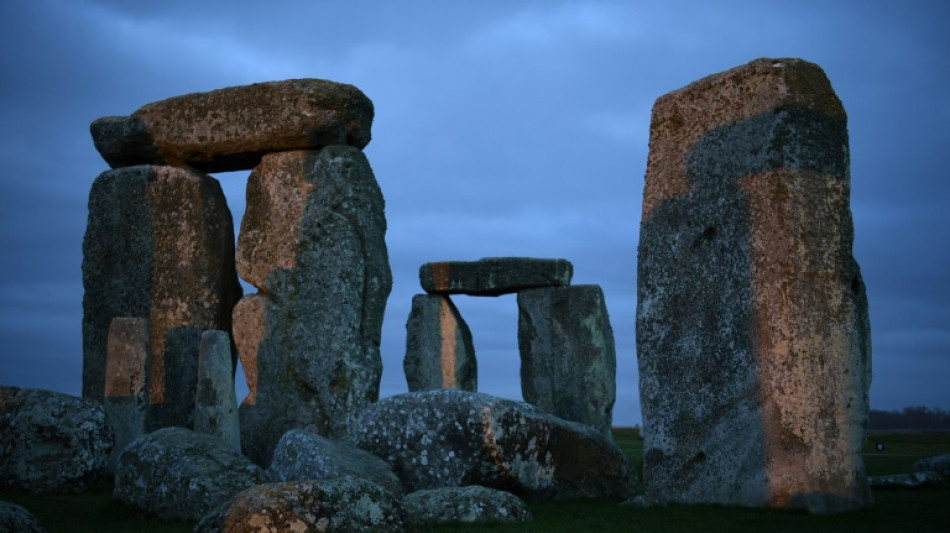
-
 Putin evokes WWII victory to rally Russia behind Ukraine offensive
Putin evokes WWII victory to rally Russia behind Ukraine offensive
-
China exports beat forecasts ahead of US tariff talks

-
 Leo XIV, the 'Latin Yankee', to celebrate first mass as pope
Leo XIV, the 'Latin Yankee', to celebrate first mass as pope
-
Most stocks lifted by hopes for US-China talks after UK deal

-
 IPL suspended indefinitely over India-Pakistan conflict: reports
IPL suspended indefinitely over India-Pakistan conflict: reports
-
German lender Commerzbank's profits jump as it fends off UniCredit
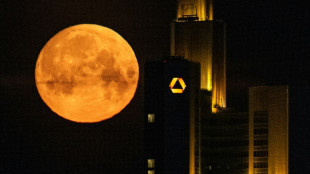
-
 Rare bone-eroding disease ruining lives in Kenya's poorest county
Rare bone-eroding disease ruining lives in Kenya's poorest county
-
India says repulsed fresh Pakistan attacks as de-escalation efforts grow
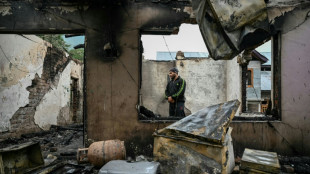
-
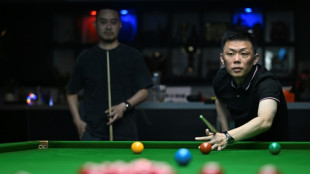 Zhao's historic snooker title sparks talk of China world domination
Zhao's historic snooker title sparks talk of China world domination
-
'High expectations': EU looks to Merz for boost in tough times

-
 Poisoned guests rarely invited before deadly mushroom lunch, Australia trial hears
Poisoned guests rarely invited before deadly mushroom lunch, Australia trial hears
-
China sales to US slump even as exports beat forecasts

-
 Indian cricket to make 'final decision' on IPL over Pakistan conflict
Indian cricket to make 'final decision' on IPL over Pakistan conflict
-
Dethroned Bundesliga champions Leverkusen face uncertain future

-
 China can play hardball at looming trade talks with US: analysts
China can play hardball at looming trade talks with US: analysts
-
French monuments in trouble while PSG prepare for Champions League final
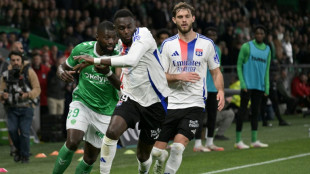
-
 Newcastle face Chelsea in top five showdown, Alexander-Arnold in spotlight
Newcastle face Chelsea in top five showdown, Alexander-Arnold in spotlight
-
Flick's Barca must show 'hunger' in crunch Liga Clasico

-
 Clasico the last chance saloon for Ancelotti's Real Madrid
Clasico the last chance saloon for Ancelotti's Real Madrid
-
Timberwolves overpower Warriors to level series

-
 Chinese fabric exporters anxious for US trade patch-up
Chinese fabric exporters anxious for US trade patch-up
-
Putin gears up to host world leaders at lavish army parade

-
 Nearing 100, Malaysian ex-PM Mahathir blasts 'old world' Trump
Nearing 100, Malaysian ex-PM Mahathir blasts 'old world' Trump
-
Leo XIV, first US pope, to celebrate first mass as pontiff

-
 Asian stocks lifted by hopes for US-China talks after UK deal
Asian stocks lifted by hopes for US-China talks after UK deal
-
Former head of crypto platform Celsius sentenced 12 years

-
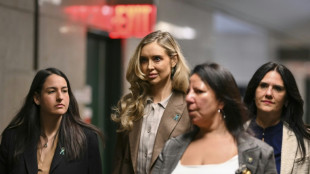 Ex-model testifies in NY court that Weinstein assaulted her at 16
Ex-model testifies in NY court that Weinstein assaulted her at 16
-
Nestlé and OMP Showcase Approach to Future-Ready Supply Chain at Gartner Supply Chain Symposium/Xpo in Barcelona

-
 Genflow Biosciences PLC Announces Share Subscription, Director's Dealing and Update
Genflow Biosciences PLC Announces Share Subscription, Director's Dealing and Update
-
Argo Blockchain PLC Announces 2024 Annual Results and Restoration of Listing

-
 'Great honor': world leaders welcome first US pope
'Great honor': world leaders welcome first US pope
-
Pacquiao to un-retire and fight Barrios for welterweight title: report

-
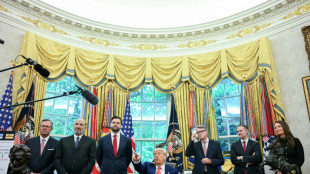 Trump unveils UK trade deal, first since tariff blitz
Trump unveils UK trade deal, first since tariff blitz
-
Man Utd one step away from Europa League glory despite horror season
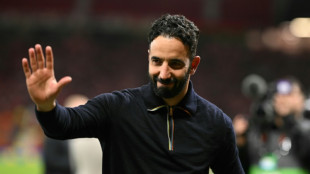
-
 Jeeno shines on greens to grab LPGA lead at Liberty National
Jeeno shines on greens to grab LPGA lead at Liberty National
-
Mitchell fires PGA career-low 61 to grab Truist lead

-
 AI tool uses selfies to predict biological age and cancer survival
AI tool uses selfies to predict biological age and cancer survival
-
Extremely online new pope unafraid to talk politics

-
 Postecoglou hits back as Spurs reach Europa League final
Postecoglou hits back as Spurs reach Europa League final
-
Chelsea ease into Conference League final against Betis

-
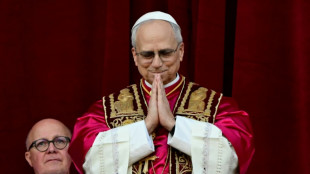 Pope Leo XIV: Soft-spoken American spent decades amid poor in Peru
Pope Leo XIV: Soft-spoken American spent decades amid poor in Peru
-
First US pope shared articles critical of Trump, Vance

-
 'Inexcusable' - NBA champs Boston in trouble after letting big leads slip
'Inexcusable' - NBA champs Boston in trouble after letting big leads slip
-
US automakers blast Trump's UK trade deal

-
 Stocks mostly rise as US-UK unveil trade deal
Stocks mostly rise as US-UK unveil trade deal
-
Trump presses Russia for unconditional 30-day Ukraine ceasefire

-
 Anything but Europa League glory 'means nothing' for Man Utd: Amorim
Anything but Europa League glory 'means nothing' for Man Utd: Amorim
-
'Inexcuseable' - NBA champs Boston in trouble after letting big leads slip

-
 Pope Leo 'fell in love with Peru'and ceviche: Peru bishop
Pope Leo 'fell in love with Peru'and ceviche: Peru bishop
-
Pakistan's T20 cricket league moved to UAE over India conflict


Stonehenge mystery deepens as altar traced to Scotland
A central stone of the famous Stonehenge monument in southwest England came from 750 kilometres away in northeast Scotland, surprised scientists said Wednesday, solving one mystery but raising another: how did its prehistoric builders move the huge slab so far?
The Neolithic circle of giant stones has been a source of wonder and mystery for nearly 5,000 years -- in the Middle Ages, the wizard Merlin of Arthurian legend was said to have stolen the monument from Ireland.
More recently, scientists have determined that the site's upright sandstones came from relatively nearby Marlborough, while the bluestones arrayed near its centre came from Wales.
But the origin of the Altar Stone, a unique six-tonne slab laying on its side at the heart of the circle, remained elusive.
It was long thought to have also come from Wales, but tests along those lines always "drew a blank," said Richard Bevins, a professor from Aberystwyth University, mid-Wales, and co-author of a new study.
This prompted a team of British and Australian researchers to broaden their horizons -- and in turn discover something "quite sensational", he told AFP.
Using chemical analysis, they determined that the Altar Stone came from Scotland's Orcadian Basin, which is at least 750 kilometres (460 miles) from Stonehenge, according to the study in the journal Nature.
- 'Genuinely shocking' -
The researchers were stunned.
"This is a genuinely shocking result," study co-author Robert Ixer of University College London said in a statement.
The "astonishing" distance was the longest recorded journey for any stone at the time, said fellow co-author Nick Pearce of Aberystwyth University.
Whether people around 2,500 BC were capable of transporting such huge stones from Wales had already been a matter of heated debate among archaeologists and historians.
That a five-by-one-metre (16-by-three-feet) stone made the trip across much of the length of the UK suggests that the British isles were home to a highly organised and well-connected society at the time, the researchers said.
They called for further research to find out exactly where in Scotland the stone came from -- and how it made its way to Stonehenge.
One theory is that the stone was brought to southern England not by humans but by naturally moving ice flows.
However research has shown that ice would actually have carried such stones "northwards, away from Stonehenge", lead study author Anthony Clarke from Australia's Curtin University told a news conference.
Another option was that the Neolithic builders moved the stones over land -- though this would have been extraordinarily difficult.
Dense forest, marshy bogs and mountains all formed "formidable barriers" for prehistoric movers, Clarke said.
- 'Incredibly important' -
Another option is that the stone was transported by sea.
There is evidence of an "extensive network of Neolithic shipping," which moved pottery and gems around the region, Clarke said.
To work out where it came from, the researchers fired laser beams into the crystals of a thin slice of the Altar Stone.
The ratio of uranium and lead in these crystals act as "miniature clocks" for rocks, providing their age, said study co-author Chris Kirkland of Curtin University.
The team then compared the stone's age to other rocks across the UK and found "with a high degree of certainty" that it came from the Orcadian Basin, Kirkland said.
Susan Greaney, an archaeologist at the UK's University of Exeter not involved in the study, said it established the first "direct link" between southern England and northern Scotland during this time.
"The placement of this stone at the heart of the monument, on the solstice axis, shows that they thought this stone, and by implication, the connection with the area to the north, was incredibly important," she told AFP.
F.Pedersen--AMWN

